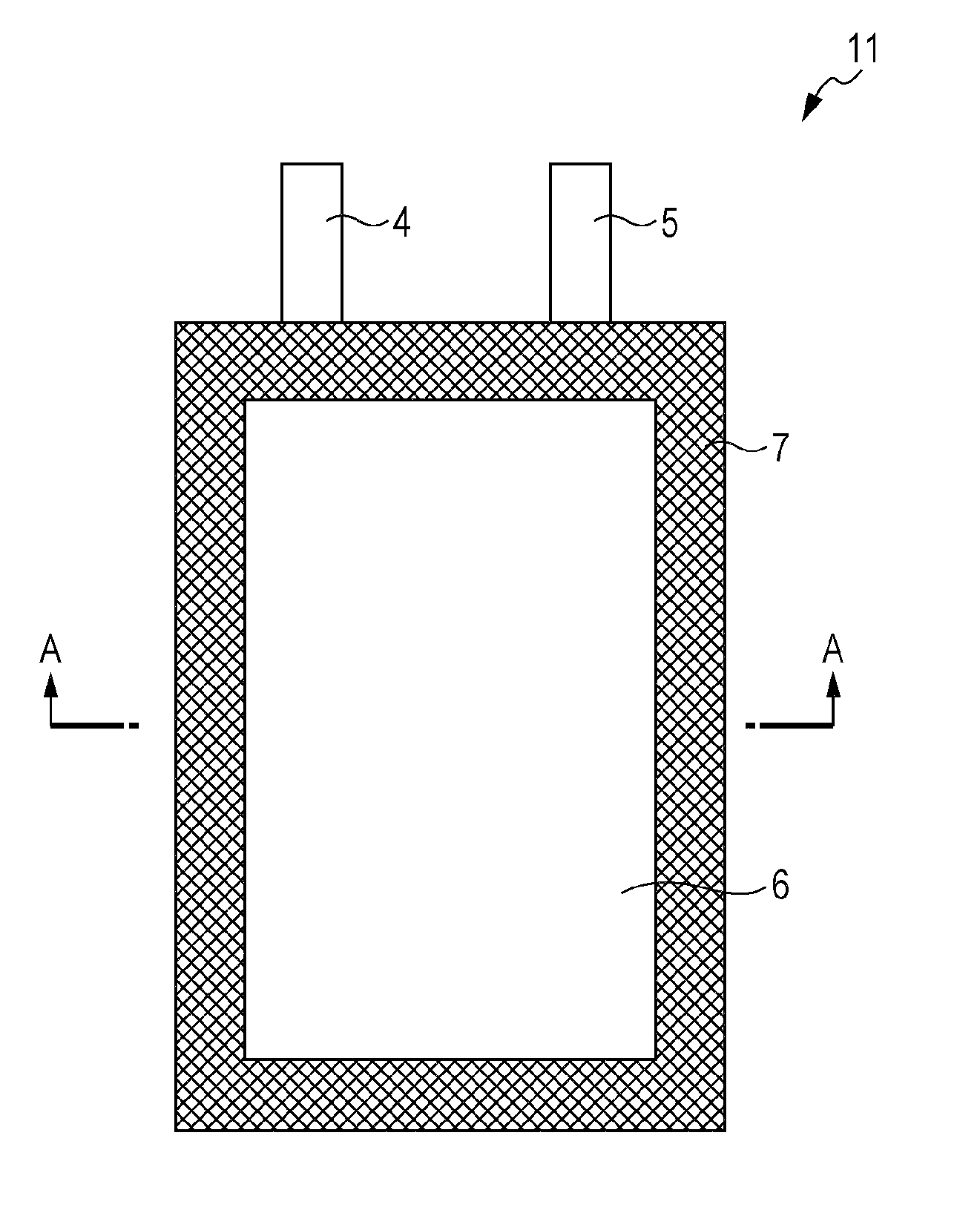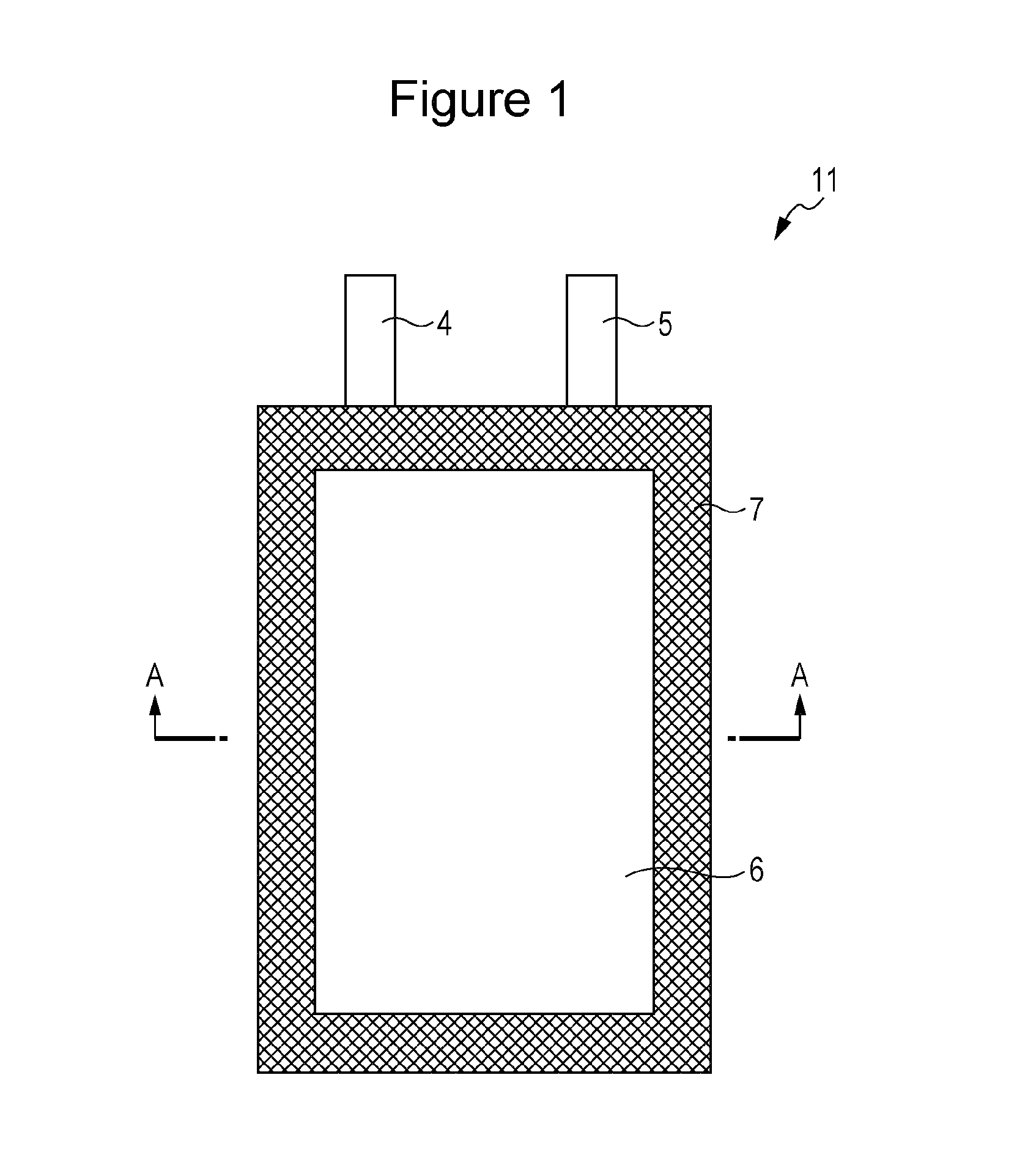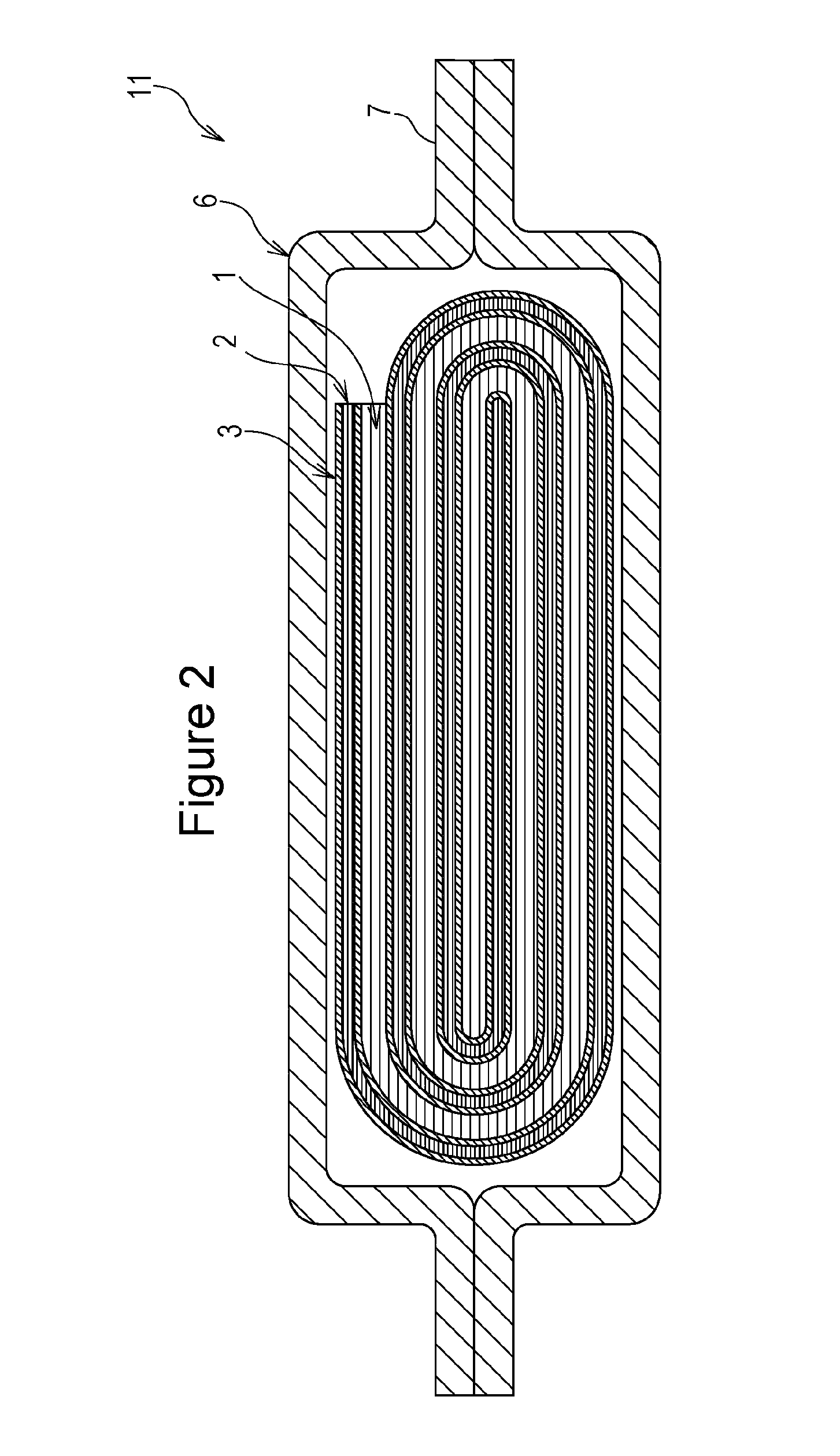Positive electrode for nonaqueous electrolyte secondary battery and nonaqueous electrolyte secondary battery using the positive electrode
- Summary
- Abstract
- Description
- Claims
- Application Information
AI Technical Summary
Benefits of technology
Problems solved by technology
Method used
Image
Examples
first example
[0063]A positive electrode for nonaqueous electrolyte secondary batteries and a battery according to the present invention will now be described. The positive electrode for nonaqueous electrolyte secondary batteries and the battery according to the present invention are not limited to those described below, and modifications and alterations can be suitably made without departing from the scope of the present invention.
Example 1
Production of Positive Electrode
[0064]First, 1000 g of lithium cobalt oxide particles that contain 1.5 mol % of Mg and 1.5 mol % of Al dissolved therein relative to the amount of lithium cobalt oxide and that also contain 0.05 mol % of Zr were prepared. The particles were added to 3.0 L of pure water and stirred to prepare a suspension in which the lithium cobalt oxide particles were dispersed. A solution prepared by dissolving 1.85 g of erbium nitrate pentahydrate [Er(NO3)3.5H2O] in 200 mL of pure water was then added to the suspension. Herein, 10% by mass of...
example 4
[0077]A battery was produced in the same manner as in Example 1, except for use of a positive electrode active material prepared by mixing a surface-modified lithium cobalt oxide and lithium nickel cobalt manganese oxide with each other at a mass ratio of 90:10.
[0078]The thus-produced battery is hereinafter referred to as a battery A4.
example 5
[0079]A battery was produced in the same manner as in Example 1, except for use of a positive electrode active material prepared by mixing a surface-modified lithium cobalt oxide and lithium nickel cobalt manganese oxide with each other at a mass ratio of 95:5.
[0080]The thus-produced battery is hereinafter referred to as a battery A5.
Comparative Example 1
[0081]A battery was produced in the same manner as in Example 1, except that only a surface-modified lithium cobalt oxide was used as the positive electrode active material.
[0082]The thus-produced battery is hereinafter referred to as a battery Z1.
Comparative Example 2
[0083]A battery was produced in the same manner as in Example 1, except that only lithium cobalt oxide (lithium cobalt oxide having a surface to which an erbium compound was not adhered, which may be hereinafter referred to as a surface-unmodified lithium cobalt oxide) was used as the positive electrode active material.
[0084]The thus-produced battery is hereinafter ref...
PUM
 Login to View More
Login to View More Abstract
Description
Claims
Application Information
 Login to View More
Login to View More - R&D
- Intellectual Property
- Life Sciences
- Materials
- Tech Scout
- Unparalleled Data Quality
- Higher Quality Content
- 60% Fewer Hallucinations
Browse by: Latest US Patents, China's latest patents, Technical Efficacy Thesaurus, Application Domain, Technology Topic, Popular Technical Reports.
© 2025 PatSnap. All rights reserved.Legal|Privacy policy|Modern Slavery Act Transparency Statement|Sitemap|About US| Contact US: help@patsnap.com



